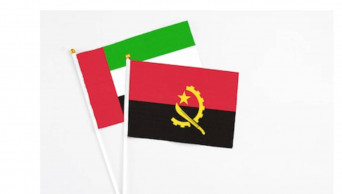Angola
Biden visits Africa's Angola amid growing China influence
On his first visit to Angola as U.S. president, Joe Biden reinforced America’s significant involvement in sub-Saharan Africa, promising billions of dollars in commitments to the nation. The visit, aimed at strengthening U.S.-Angola ties, included a stop at a slavery museum where Biden acknowledged the historical connection between the nations’ economies through the transatlantic slave trade.
Biden expressed to Angolan President João Lourenço, "The United States is all in on Africa," describing the visit as a key moment in the two nations' relationship, which dates back to the Cold War. However, the trip also serves as a response to China's growing influence across Africa, a continent of over 1.4 billion people. While Biden highlighted a U.S. pledge of $3 billion to redevelop the Lobito Corridor railway—a project linking Angola, Zambia, and Congo—China simultaneously made a significant move, announcing a ban on exports of critical high-tech materials to the U.S. a day after the U.S. expanded its restrictions on Chinese tech companies.
The Lobito Corridor project aims to facilitate the transport of raw materials crucial for electric vehicle batteries and clean energy technology, an area where China has already made substantial investments. The corridor is backed not only by the U.S. but also by the European Union, the Group of Seven nations, and private consortiums from the West, as well as African banks.
Biden is set to visit Lobito on Wednesday to see the corridor’s Atlantic outlet. However, the completion of the project is expected to take years, and much of the responsibility may fall to the incoming Trump administration, with White House officials expressing hope that future U.S. leadership will continue its support.
Read: Biden approves long-range weapons for Ukraine: What it means for the war
Despite this, the Biden administration is framing the Lobito Corridor as an opportunity for sustainable, reliable investments that will benefit Angola and the wider African continent, not a simple competition with China. Biden emphasized that the U.S. is not forcing countries to choose between the U.S., Russia, and China but is offering partnerships for long-term development.
Angolan citizens expressed hope that the project would create jobs for the country’s youth. The visit also included a moment of personal reflection for Biden, as he toured Angola’s National Slavery Museum, which was once a site where enslaved people were baptized before being shipped to America.
Biden’s visit to Angola, delayed several times, follows his earlier commitment to strengthening U.S.-Africa relations, which was marked by the 2022 U.S.-Africa Summit. His trip was initially scheduled for last year but was postponed due to Hurricane Milton. The last U.S. president to visit sub-Saharan Africa was Barack Obama in 2015. Biden’s visit continues his diplomatic efforts to engage more deeply with the African continent.
Source: With inputs from agencies
1 year ago
Former Angolan president Jose Eduardo dos Santos dies at 79
Former Angolan president José Eduardo dos Santos died Friday in a clinic in Barcelona, Spain, after an illness, the Angolan government said.
He was 79 years old and died following a long illness, the government said in an announcement on its Facebook page.
The announcement said dos Santos, who ruled Angola for almost 40 years from 1979, was “a statesman of great historical scale who governed ... the Angolan nation through very difficult times.”
Dos Santos had mostly lived in Barcelona since stepping down in 2017 and he reportedly had been undergoing treatment there for health problems.
Angola’s current head of state, Joao Lourenco, announced five days of national mourning starting Friday, when the country’s flag will fly at half-staff and public events are canceled.
Dos Santos came to power four years after Angola gained independence from Portugal and became enmeshed in the Cold War as a proxy battlefield.
Read: Angolan president pledges investments to modernize public television
His political journey spanned single-party Marxist rule in post-colonial years and a democratic system of government adopted in 2008. He voluntarily stepped down when his health began failing.
In public, dos Santos was unassuming and even appeared shy at times. But he was a shrewd operator behind the scenes.
He kept a tight grip on the 17th-century presidential palace in Luanda, the southern African country’s Atlantic capital, by distributing Angola’s wealth between his army generals and political rivals to ensure their loyalty. He demoted anyone he perceived to be gaining a level of popularity that could threaten his command.
Dos Santos’ greatest foe for more than two decades was Jonas Savimbi, leader of the UNITA rebels whose post-independence guerrilla insurgency fought in the bush aimed to oust dos Santos’ Popular Movement for the Liberation of Angola, or MPLA.
3 years ago
6 dead in Angola car accident
Bie, Oct 15 (Xinhua/UNB) -- Six people were killed and another injured in a car accident Monday in Angola's central Bie Province, local police said.
6 years ago
Angola/UAE trade chamber to promote Angolan exports, balance trade
Luanda, Oct. 9 (Xinhua/UNB) -- The Angola/United Arab Emirates Chamber of Commerce and Industry (CCIA-UAE) launched an action plan here on Tuesday to promote Angolan exports in a bid to balance the trade between the two countries.
6 years ago

.jpg)




